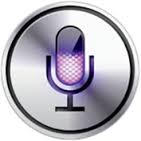 After the long, long, long HomeHero goodbye – was the analysis correct? HomeHero, based in LA, was one of the three dubbed here as 'Home-egos' to launch within the past 2-3 years -- along with Honor and Hometeam -- and the first to shut its home care business down. But, unlike most shutdowns, this was a moment for founder Kyle Hill to recap the 'tech-enabled' home care firm’s life and closing story in exhaustive and exhausting detail, complete with pictures. Considering its $23 million of investment, it should have landed on the same Forbes page as the other home care investments – which may be because its investors were not typical VCs. But HomeHero’s example illustrates the enthusiasm and limited business analysis of startups in the older adult space, Lively being one of the most recent, but there are many more who were publicized loudly and then disappeared without even a puff of smoke – or a founder post-mortem.
After the long, long, long HomeHero goodbye – was the analysis correct? HomeHero, based in LA, was one of the three dubbed here as 'Home-egos' to launch within the past 2-3 years -- along with Honor and Hometeam -- and the first to shut its home care business down. But, unlike most shutdowns, this was a moment for founder Kyle Hill to recap the 'tech-enabled' home care firm’s life and closing story in exhaustive and exhausting detail, complete with pictures. Considering its $23 million of investment, it should have landed on the same Forbes page as the other home care investments – which may be because its investors were not typical VCs. But HomeHero’s example illustrates the enthusiasm and limited business analysis of startups in the older adult space, Lively being one of the most recent, but there are many more who were publicized loudly and then disappeared without even a puff of smoke – or a founder post-mortem.
In many ways, HomeHero was quite typical of inappropriate expectations. Reading Kyle Hill’s tale as well as his quote in Tech-Enabled Home Care 2017 – it’s clear that there were misplaced expectations which may have led to missteps. The background was the very typical and typically tiresome 'I had a grandmother.' And oh, 'we thought we were a tech company' that would create the, uh, killer app for home care. Or was this really a regional home care employer of vetted contract workers? The market wasn't ready for that app, though, so HomeHero was, at least for a while, a traditional home care company. And about those contract workers. Along came the national 2015 overtime rule making home care workers eligible for time and a half pay, thus making the 24-hour live-in assignment very expensive. But the litigation that led to this result was begun in 2013. So it should not have been a surprise, any more than the long-described minimum wage efforts in California. Today that wage is $10.50/hour, not unlike the $10.47/hour posted on Payscale for companion aides, so no surprise there.
So were these really problems, or were they opportunities? Kyle’s stated concern now? HomeHero, a California company, must hire employees that it must vet and it must manage the corresponding employee payment process. But wait, other care-connecting companies, including CareLinx and Care.com, have made the family the employer of record. Unfortunately per Kyle’s lament, this approach was not part of HomeHero’s plan -- which was to hire workers as contractors. His other complaint – hospitals like to pilot new processes, but not commit to deploy -- that's just not credible. If it were so, hospitals would not be deploying, as they are, plenty of new technology and related new processes -- like robots, patient portal software, and predictive analytics.
Wrapping it up – no disruption to see here – look elsewhere. HomeHero was one of the three well-published care in the Home-egos, true, but was it disruptive, as its own media hype proclaimed? Not at all. Unlike CareLinx, it was not a matching marketplace to find care. Unlike Care.com, it did not find a way for families to be the employer of the worker process payments. Unlike HomeInstead, it didn’t effectively partner with hospitals for a hospital-to-home program. Unlike RightAtHome, it did not participate in a study that proved the value of a checklist as one element of preventing readmissions -- or work with Philips to use data to detect readmission risks. Unlike LivHome, it did not deploy video as a way to check in on care recipients. Unlike ComfortKeepers, there was no in-home grandPad tablet for care recipients to connect with families. Collectively all of those companies are the tech-enabled home care disruptors. It’s about time.
from Tips For Aging In Place https://www.ageinplacetech.com/blog/home-hero-sort-done-maybe-now-what-can-others-learn
 Has the 'Voice First' interface trend gone mainstream -- and can it benefit seniors? Some think so. What has initially been driven by Apple platform Siri and the Amazon Echo – and now with Google Home -- is about to become mainstream (or as it is described, 'Voice First’) as the
Has the 'Voice First' interface trend gone mainstream -- and can it benefit seniors? Some think so. What has initially been driven by Apple platform Siri and the Amazon Echo – and now with Google Home -- is about to become mainstream (or as it is described, 'Voice First’) as the